- 08/06/2022
How to use watercolour pencils
How to use watercolour pencils
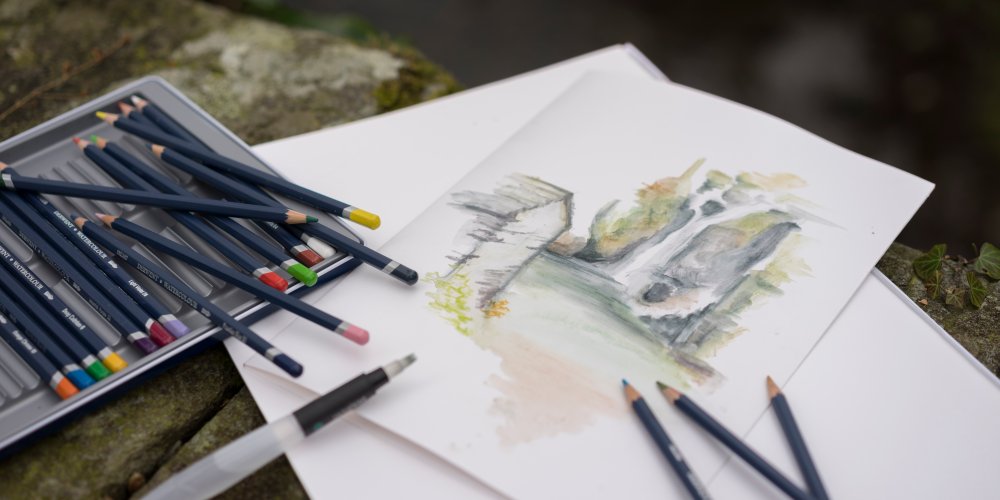

Combining the best of both worlds, watercolour pencils offer the fluidity of watercolour paint with the sturdy control of a pencil.
Simple and fun to use, watercolour pencils are a fantastic choice for artists who want to work in vibrant and atmospheric colour.
If you’re eager to get started, we stock a wide range of watercolour pencils from top brands like Derwent, Faber-Castell and Bruynzeel.
What are watercolour pencils?
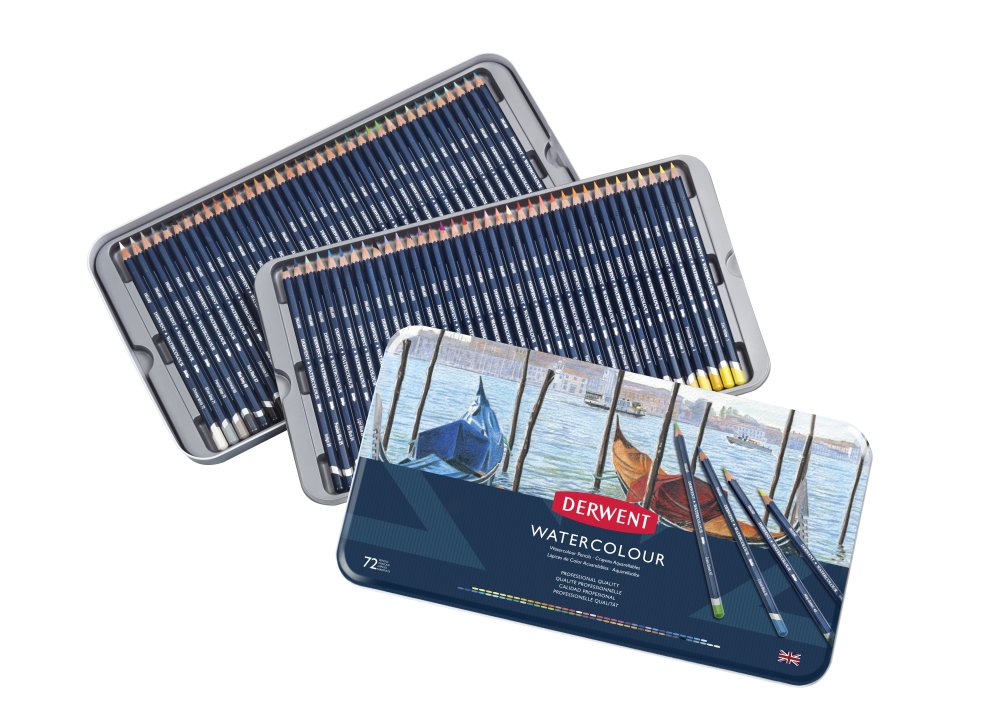

Watercolour Pencils look and behave in a similar way to normal coloured pencils - with one key difference.
The lead in a watercolour pencil is water-soluble. When water is applied to a fully sketched artwork, it's activated and trasnformed into a watercolour paint-like consistency.
Watercolour pencils allows you to create artwork that's somewhere between drawing and painting - with endless possibilities of style and form.
Top tip: You can also add water directly to the nib and "paint" straight onto the page.
Why use watercolour pencils?
There are many reasons to choose watercolour pencils for your next artwork:
It's easy to work with watercolour pencils anywhere - all you need is your set, water and a surface to work on.
Pencils may offer greater control than using a brush.
It's possible to create hybrid works using water on some sections but keeping others dry.
It may be easier to add detail to your image when compared to using paint.
What surface can you use with watercolour pencils?
Watercolour pencils should be used with watercolour paper or pads. When you’re working with watercolour paper, you should still make sure the page is secure and won’t warp when you apply water (especially if it’s a lot!).
To do this, try taping down the edges of your paper to the table you’re working from. This way, you’ll avoid paper curling or crumpling, which might cause paint to travel and colours to mix together.
What you'll need to use watercolour pencils
You won’t need many materials to set going with watercolour pencils:
A set of watercolour pencils – the more colours in your pack, the more options you’ll have for blending and experimentation.
Brushes – you’ll need brushes to apply the water.
Surface – watercolour paper or pad.
Water – a lot of water to activate the colour.
Paper towels – in case you need to tidy up areas where too much water has gathered.
Pencil sharpener – it’s vital to keep your nibs sharp for all those intricate details. A sharp watercolour pencil will also offer greater control.
Pencil – you may want to lay the foundations of your artwork with an ordinary pencil before you start.
Watercolour pencil techniques
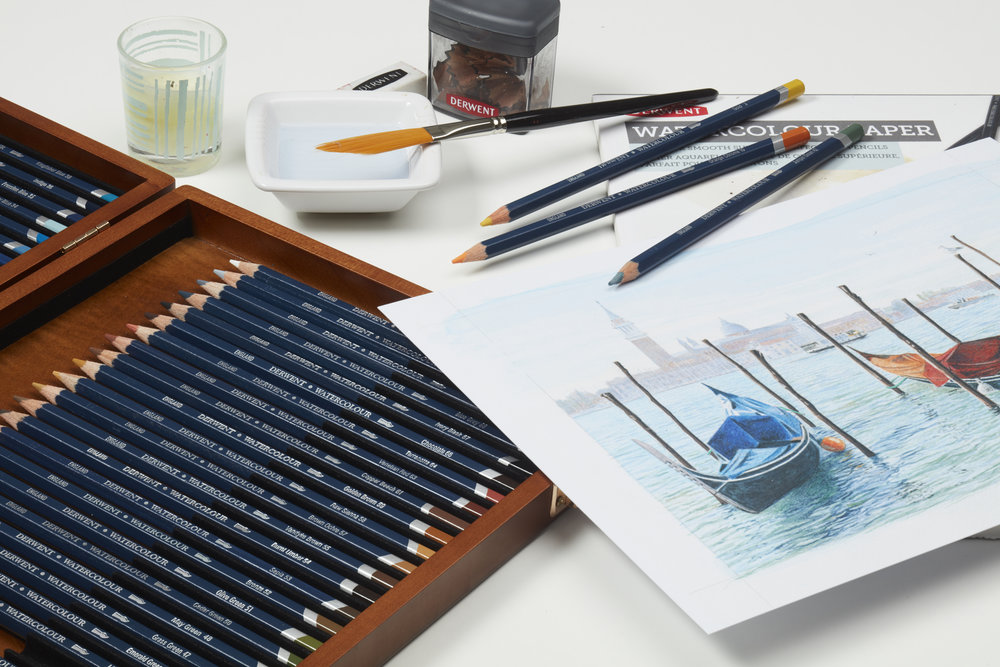

Pencil pressure
Applying different levels of pressure will create stronger or weaker pigment once water is applied.
Be mindful of this while you’re creating your artwork – try to apply more pressure to areas you wish to be darker, and vice-versa for lighter areas.
Test before you use
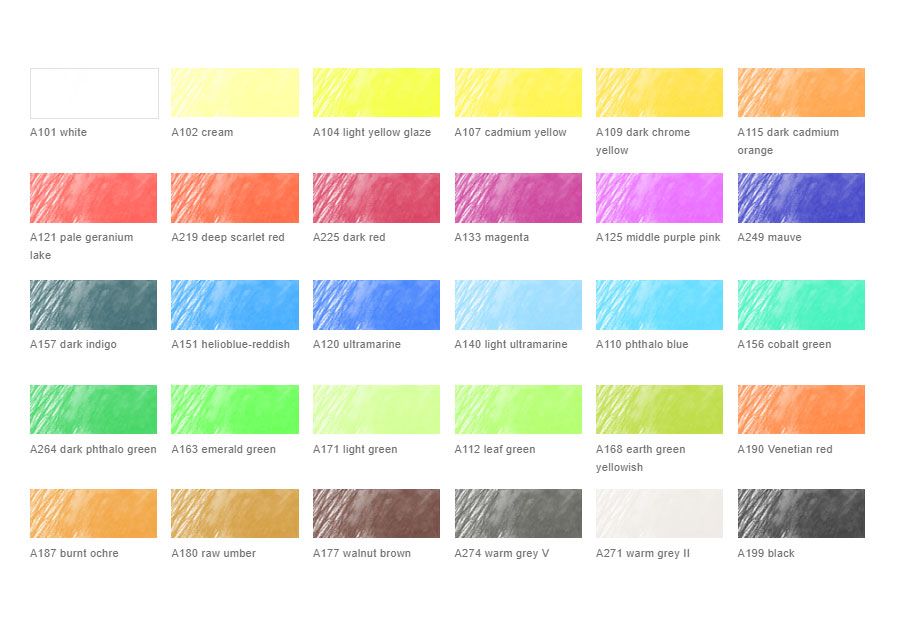
The colour of watercolour pencils will change when you add water – some with retain much of their pigment, while others may fade and become much lighter.
So you know how your artwork will look once you’ve applied water, try testing. Sketch and gradient of colour, then apply water to see how it reactions the strength of the colour.
Sketch out your composition
Using an ordinary pencil, sketch out the main elements of your artwork. This can be a useful guide when you’re applying watercolour pencils later.
Be sure to use a soft pencil if you can, as it strong lines may be visible if you’re using light colours.
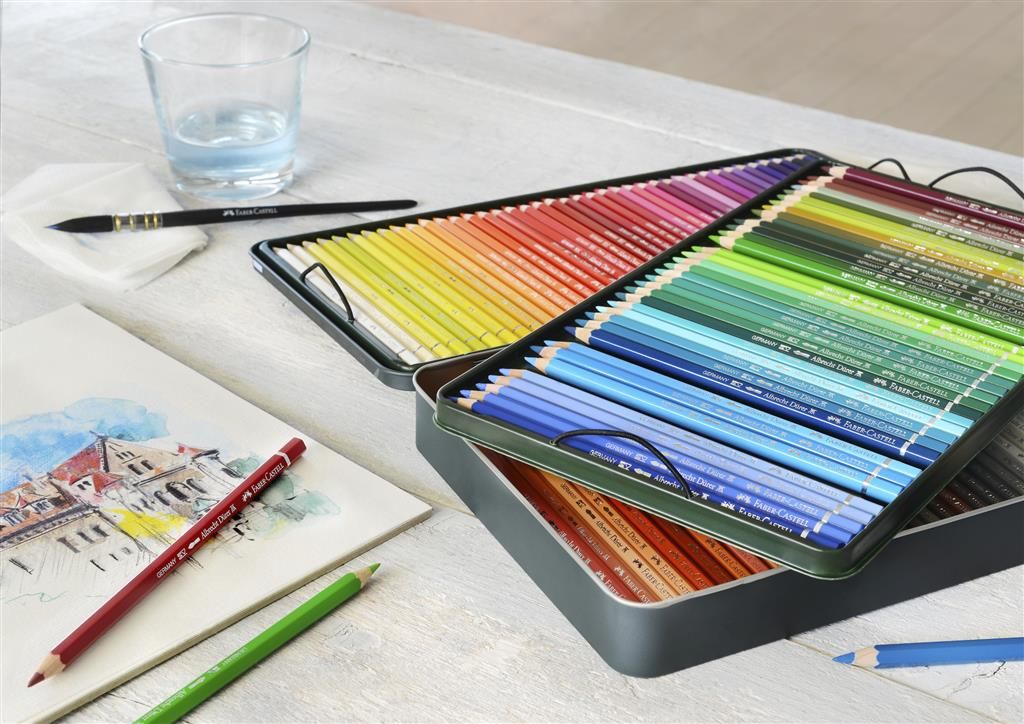
Work light to dark
Just like with watercolour paint, it’s tricky to get light colours to show up over the top of darker shades. Try to work light to dark, so work on the sky before you touch the mountainside in a landscape, for example.
Don’t be afraid of white space
When you’re filling in the colour, don’t be afraid to leave areas of white space around them. Applying water will change the consistency of the pigment, allowing you to spread it into the white space with a brush.
Blending colours
Watercolour pencils can be blended just like paint. To create a new hue, lightly combined layers of colour on top of each other. Techniques like crosshatching can be a handy way to forming new, interesting shades.
Lightening dark areas
If you find an area is too dark once you’ve applied water, don’t panic. While it’s still wet, you can gently dab it with a paper towel to lift the colour from the page.
Try to concentrate while you do this, as it’s possible to smudge areas of paint if applied too robustly.
Adding stronger detail
For the intricate elements of your artwork, try to apply water directly to the end of your watercolour pencil with a brush. This will allow you to draw stronger, clearer lines to capture stronger details.
Using watercolour pencils with paint
Not only are watercolour pencils a beautiful material in their own right, they can be used alongside watercolour paint.
Once your watercolour paint layer is dry, apply water to a sharp watercolour pencil to draw detailed areas.
If you’re excited to get started with watercolour pencils, we stock a huge range of sets in a range of colours.
How to use watercolour pens
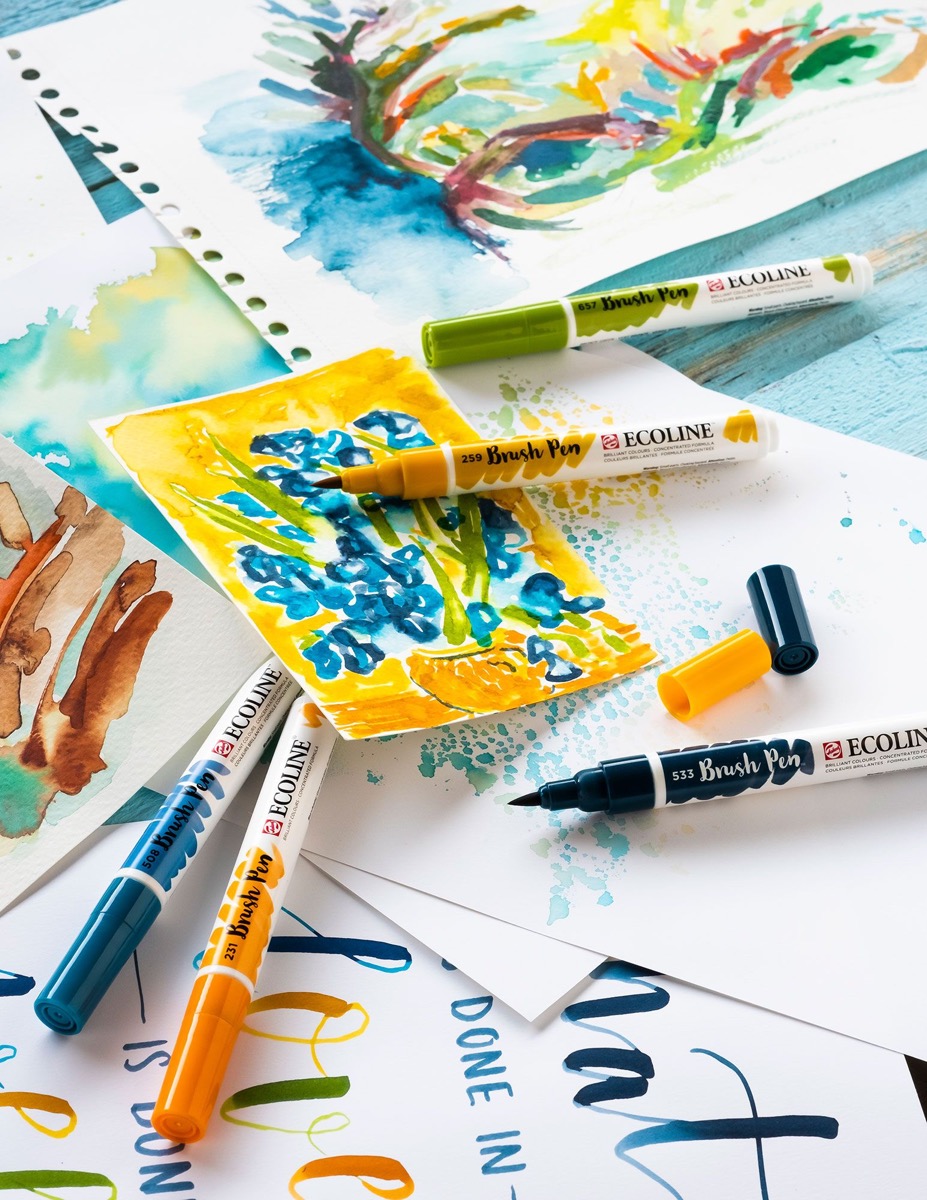

When it comes to watercolour options, you’re spoilt for choice. If you’re eager to experiment further, try using watercolour pens or markers.
What are watercolour pens?
Watercolour pens are constricted in a similar way to normal marker pens, but with a brush nib. These nibs are softer and behave like a thin brush, offering excellent control.
Rather than watercolour paint, these pens using a special type of water-soluble ink with a very similar consistency and appearance.
Using watercolour pens
Surface – similar to watercolour paints or pencils, watercolour pens should be with watercolour paper or pads.
Water – while you won’t need water to activate the colour, you can dilute the strength of the pigment by dipping the nib into a pot of water before using it.
Blending – it’s easy to blend colour together, simply paint over the colour you want to change. Test these combinations out on spare paper to see which work best. When you’re done, dip the nibs in water to make sure there’s no stray ink remaining.
If you’re ready to get started with watercolour pens, we offer a brilliant set from Talens.
 Same Day Dispatch Mon-Fri Before 2PM
Same Day Dispatch Mon-Fri Before 2PM

 Free UK Delivery on Orders Over £50
Free UK Delivery on Orders Over £50

